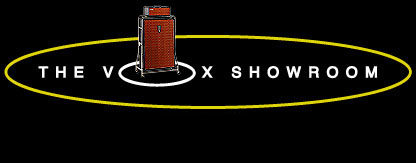 |
Popularized by the British guitar legend, Hank Marvin of the
|
"Shadows," the Vox "Short Tom" Echo Standard mechanically simulated an echo effect for guitars or vocals using technology derived from an audio tape recorder. The "Short Tom" Echo Standard was designed and manufactured by Jennings Musical Instruments (JMI) of Dartford, Kent, UK and featured in the
1963 "Precision in Sound" Vox product catalog. It last appeared in the
1966 JMI Vox catalog.
The Vox "Short Tom" Echo was the third generation mechanical echo device from Vox. From 1959 through 1962, JMI bought
two styles of mechanical echo units from the Italian manufacturer
 |
Meazzi and rebranded them as a Vox product. The Meazzi echo used a magnetically treated disk as a recording medium. The inset photo at left shows an image of the three channel |
Vox rebranded Meazzi echo unit from the
1961 Vox catalog. The
1962 Vox catalog introduced a five channel version of the Meazzi echo unit, also rebranded a Vox product.



